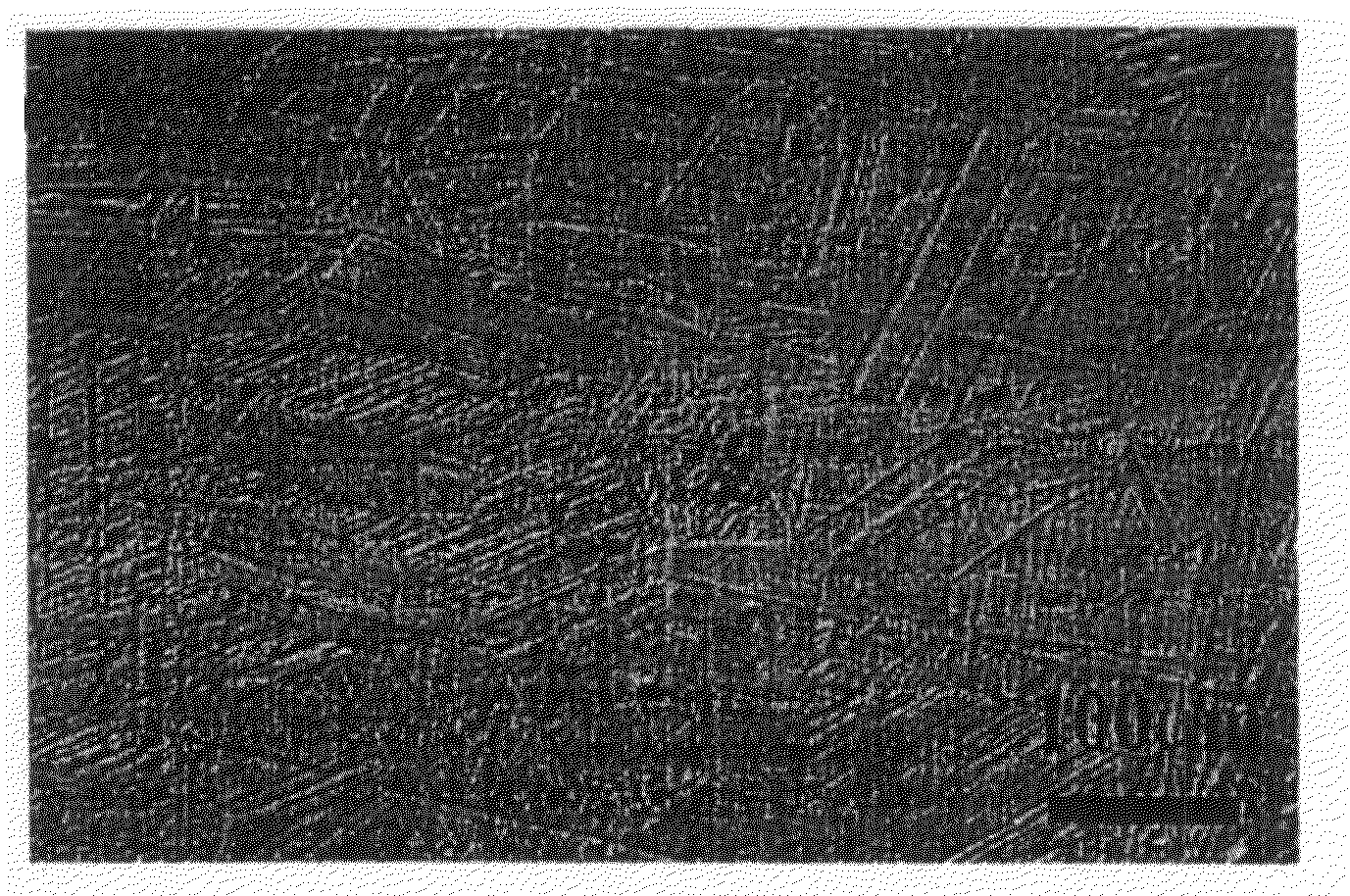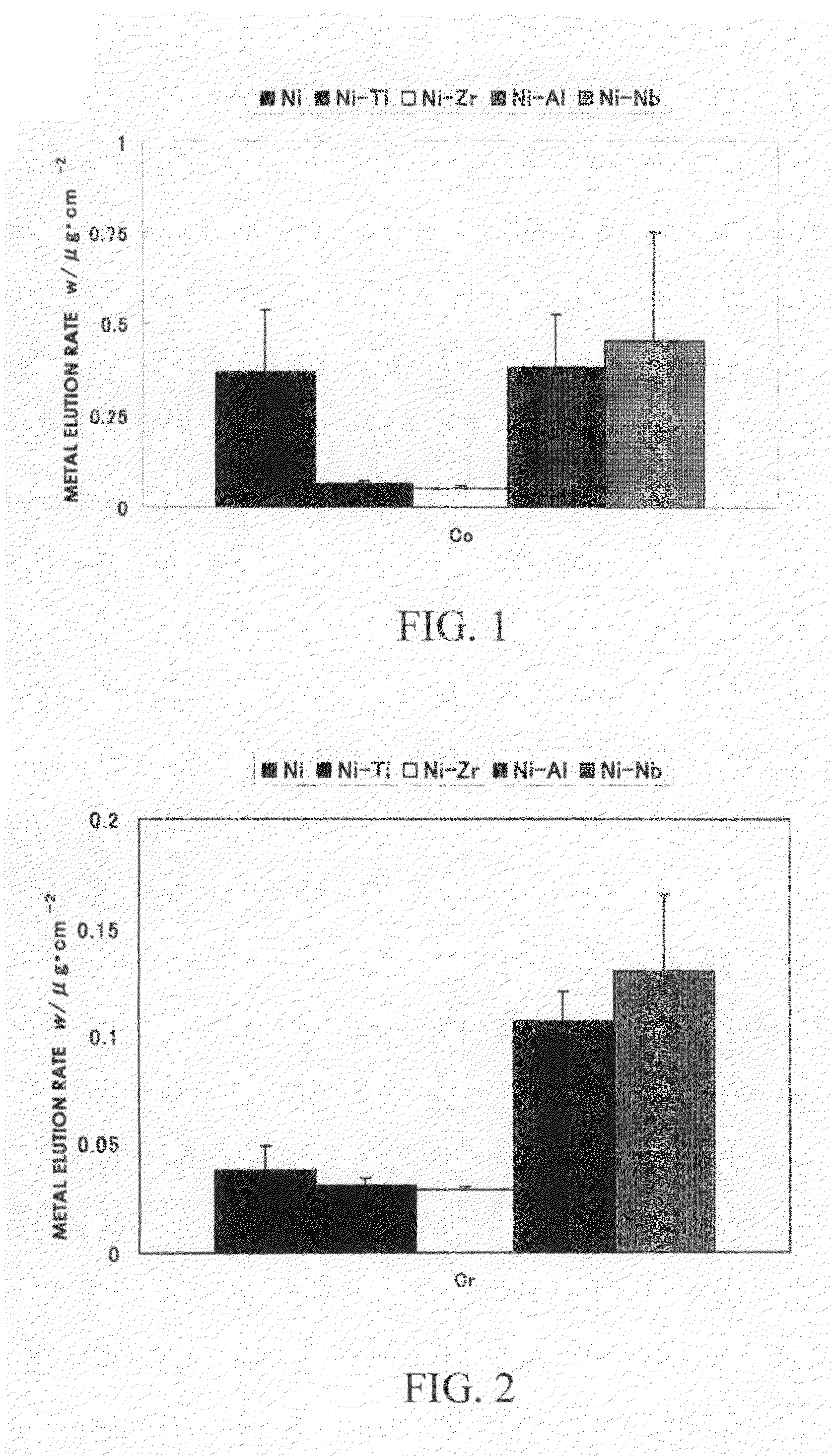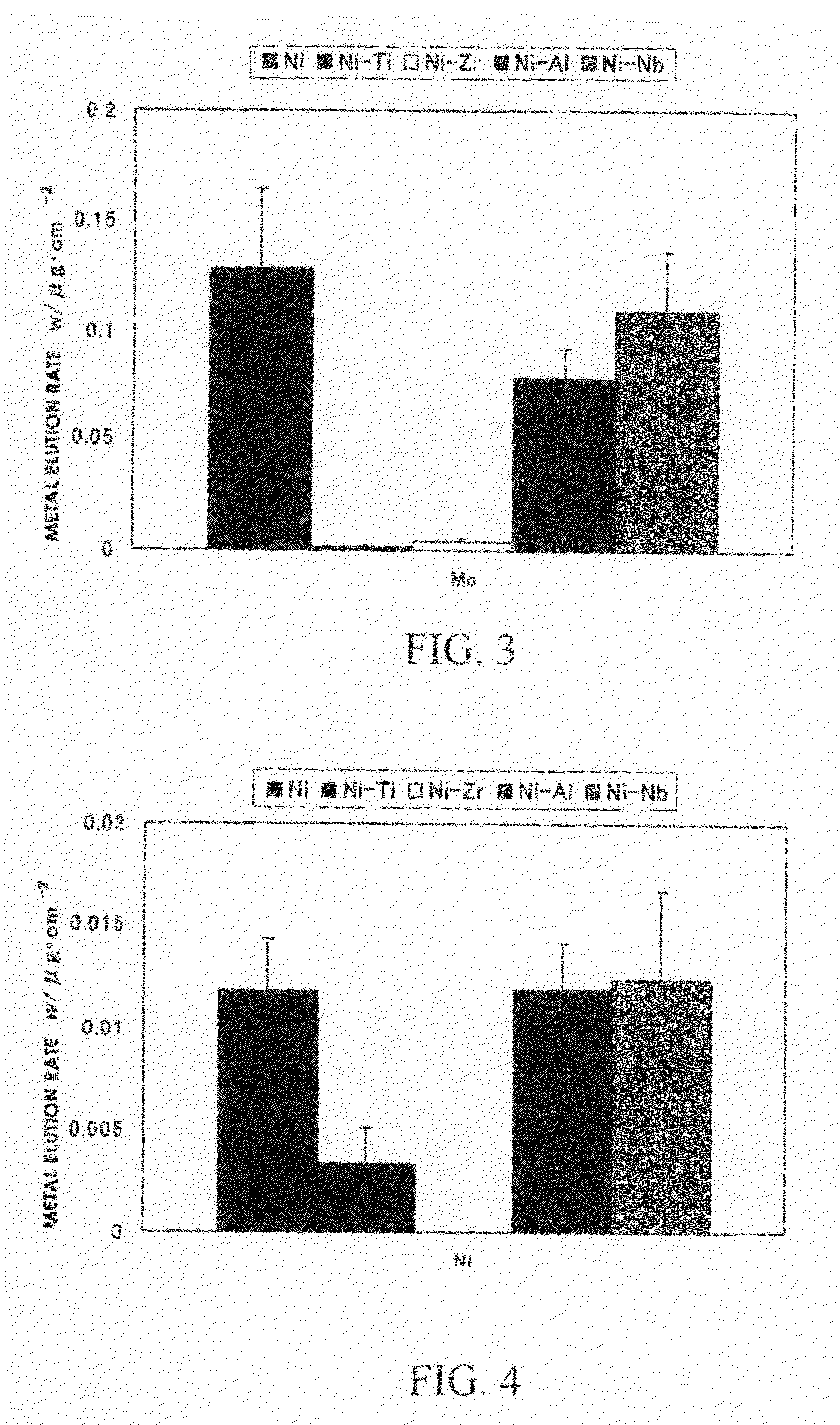Bio-Co-Cr-Mo Alloy With Ion Elution Suppressed by Structure Control, And Process For Producing Same
a technology of ion elution and bio-cocrmo alloy, which is applied in the direction of prosthesis, shoulder joints, joint implants, etc., can solve the problems of unavoidable inclusion of ni in the starting material, bio-toxicity of even such trace amounts of ni, and inability to suppress the elution rate of ni ions, so as to suppress the allergic reaction, and reduce the rate of ion elution ra
- Summary
- Abstract
- Description
- Claims
- Application Information
AI Technical Summary
Benefits of technology
Problems solved by technology
Method used
Image
Examples
example 1
[0080](Search For Additive Element X For Fixing Trace Amounts of Ni)
[0081]Elements that form compounds with Ni and have low bio-toxicity were searched for on a two-dimensional state diagram. As a result, aluminum (Al), titanium (Ti), zirconium (Zr), and niobium (Nb) were selected as potential additive elements X.
[0082](Sample Composition and Sample Melting)
[0083]The sample composition is described below.
[0084]Al: 0.5 wt %, Ti: 0.3 wt %, Zr: 0.05 wt %, and Nb: 0.5 wt % were each added to a composition of Co: balance, Cr: 29 wt %, Mo: 6 wt %, and Ni: 1 wt % as a control. In this sample composition, 1 wt % of Ni was intentionally included to facilitate comparison of the amount of Ni elution. The sample was melted using a high-frequency vacuum induction melting furnace. Carbon was added in a state in which the molten sample was maintained in a vacuum, and additive element X was added after thorough deoxygenation.
[0085](Test Sample)
[0086]An alloy sample for testing was fabricated by a me...
example 2
[0111]The test sample composition was as described below.
[0112]Lanthanide elements, i.e., La, Ce, Pr, Nd, Pm, Sm, Eu, Gd, Tb, Dy, Ho, Er, Tm, Yb, and Lu, and a misch metal, i.e., La—Ce misch metal, were each added to a control having the composition Co: balance, Cr: 29 wt %, Mo: 6 wt %, Ni: 1 wt %. In the same manner as in Example 1, 1 wt % of Ni was intentionally included in the sample composition to facilitate comparison of the amount of Ni elution. The same processing as that of Example 1 can be performed to confirm the suppression of Ni elution, i.e., the fixing of Ni. The basis for the Ni fixing observed in Example 1 is the addition of an element having a strong disposition to bond to Ni. When elements that bond to Ni are searched for, numerous such elements are identified among hydrogen storage alloys (compounds), and hydrogen storage alloys that form compounds with Ni are thus found among lanthanide elements. The same effects as those obtained by addition of Zr can therefore ...
example 3
[0114]The test sample composition was as described below.
[0115]In the same manner as in Example 1, 1 wt % of Ni was intentionally included in the following sample composition to facilitate comparison of the amount of Ni elution: Co: balance, Cr: 29 wt %, Mo: 6 wt %, Ni: 1 wt %. A sample of the composition was fabricated by forging using an alumina (Al2O3) crucible and a magnesia (MgO) crucible. Casting was performed by a method in which the melt temperature was maintained temporarily at 1600° C. to 1650° C. or above, after which carbon was added to the molten metal while still in a vacuum, the oxygen blended into the molten metal was removed, the melt temperature was decreased to 1400 to 1450° C. and maintained for a short time, and the molten metal was cast into a die. The sample thus fabricated was subjected to elution testing by the same process as described in Example 1.
[0116](Test Results)
[0117]The results of testing metal elution are shown in FIGS. 7 through 10. The Co-29Cr-6M...
PUM
| Property | Measurement | Unit |
|---|---|---|
| temperature | aaaaa | aaaaa |
| temperature | aaaaa | aaaaa |
| temperature | aaaaa | aaaaa |
Abstract
Description
Claims
Application Information
 Login to View More
Login to View More - R&D
- Intellectual Property
- Life Sciences
- Materials
- Tech Scout
- Unparalleled Data Quality
- Higher Quality Content
- 60% Fewer Hallucinations
Browse by: Latest US Patents, China's latest patents, Technical Efficacy Thesaurus, Application Domain, Technology Topic, Popular Technical Reports.
© 2025 PatSnap. All rights reserved.Legal|Privacy policy|Modern Slavery Act Transparency Statement|Sitemap|About US| Contact US: help@patsnap.com



